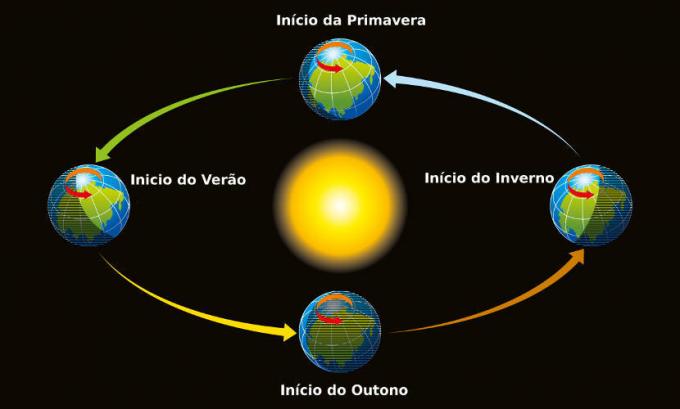O Federal District (DF) is located in the Midwest region and is one of the 27 federative units in Brazil. Its headquarters is the city of Brasília, the country's capital since 1960.
It is an autonomous territory, being the only federation unit in the country that covers the city of Brasília, where the seat of government is located. It is divided into 31 administrative regions, called satellite cities.
General data
-
Initials: DF
Capital: Brasilia - Gentile: who is born in the Federal District is from Brasilia
- Population: 3,039,444 inhabitants (IBGE, 2017)
- Territorial extension: 5,779,997 km² (IBGE, 2016)
- Demographic density: 444.66 inhabitants per km² (IBGE, 2010)
- Number of Municipalities: 1
- Birthday: April 21st
- Economy: agriculture, livestock, trade, services and industry (extractive, transformation, transport, fisheries and food)
- Climate: tropical
- Main Rivers: Preto, Paranoá and São Bartolomeu
Flag
Like all Brazilian states, the Federal District has its flag, created in 1969 by writer Guilherme de Almeida.

It is a white rectangle with an olive green shield and a stylized yellow cross, which refer to the four cardinal points and the indigenous arrows. These colors were specially chosen because they also refer to those of the Brazilian flag.
History
Brasília was designed by the architect Oscar Niemeyer, designed by Lúcio Costa (1902 -1998) and its construction began during the government Juscelino Kubitschek.
The desire to transfer the capital to the interior of the country was an idea that emerged much earlier, at the time of Brazil's independence. The name Brasília was suggested by José Bonifácio, in 1823. In fact, this was the name of one of his daughters.
The objective was to take the Federal District, that is, the capital, to an area far from the sea and, thus, populate the hinterland and avoid external attacks.
The geographic coordinates would have appeared in a dream of João Bosco, an Italian religious. And finally, in 1891, the project to transfer the federal capital was included in the First Constitution of the Republic of Brazil.
The cornerstone of the city was laid in 1922, the construction project started in 1956 and its inauguration would take place on April 21, 1960.

With a bold layout, the city is shaped like an airplane. Among the main buildings built by Niemeyer are the National Congress, the Planalto Palace, the Alvorada Palace, the Federal Supreme Court and the Brasília Cathedral.
Main features
The Federal District is a Brazilian state like Bahia, Rio de Janeiro or Paraná, but it is formed by a single city: Brasília.
This status given to capitals of a country occurs in various parts of the world such as Washington (USA) or Buenos Aires (Argentina). Likewise, it happened in Brazil, when Rio de Janeiro was the country's capital.
Map

Culture
The culture of Brasilia is a miscellany of the country, with an outstanding Northeastern and Minas Gerais influence. From these two regions, workers who worked at the construction sites in the Federal District departed and became known as "candangos".
Brasília has 112.2 square kilometers declared as a Cultural Heritage of Humanity by Unesco in 1987.
As a young city, its tradition is linked to modern architecture. Among the main monuments, the following stand out: the Honestino Guimarães National Museum, the Indigenous Peoples Memorial, the Dance Center and the National Library.
In the 80s, rock bands like "Legião Urbana" and singers like Cássia Eller, from Brasília, renewed the Brazilian music scene.
Economy
Currently, the service sector accounts for 71% of the Brazilian economy, as it is a city that concentrates federal government agencies, embassies and universities.
The offer of services related to culture, such as theater, dance, fashion and artistic productions, is also outstanding.
This was not always the case, as during the period when the city was built, civil construction was responsible for 90% of the jobs.
Climate
Brasília is under the influence of the tropical climate. The average annual temperature is 22°C and thermometers range from 13°C to 28°C.
As it is located in a cerrado region, the relative humidity is low most of the year. During the dry season, which runs from May to September, the average humidity is 10%. Only in the period between October and May does the humidity rise to 70% at the peak of rain.
Fauna and Flora

The flora and fauna of the Federal District show its location in the closed biome. They are species of plants and animals with the ability to survive extremely dry weather.
There are currently around 11,600 cataloged plant species in the region. Among the most exuberant is the Ipê, in white, purple, yellow and blue.
The Ipê blooms in winter and is a symbol of the Cerrado and the main cities in the Midwest region. The landscape is also marked by examples of pindaíba, pau-brasil, buriti and paineiras.
The fauna is made up of about 199 species of mammals, in addition to 1.2 thousand fish, 150 amphibians, 837 birds and 180 reptiles.
Read more:
- Midwestern States
- Midwest region
- Brazilian Regions
- Acronyms of Brazilian States



